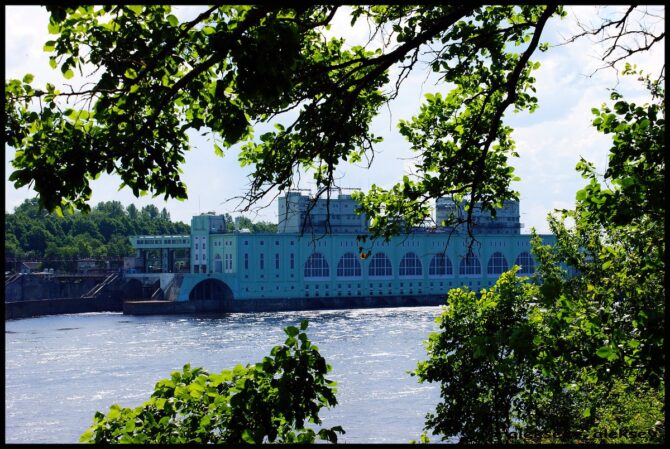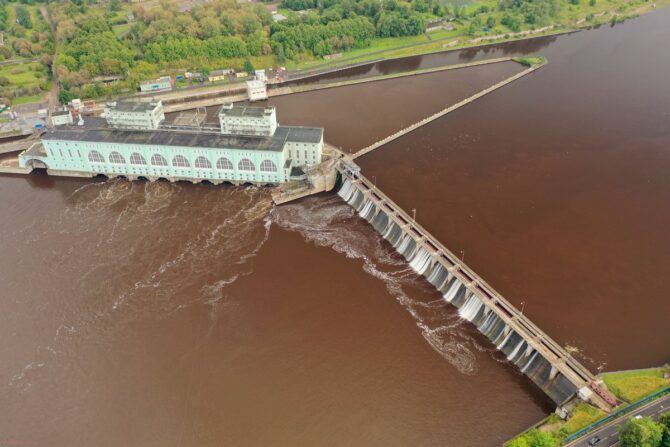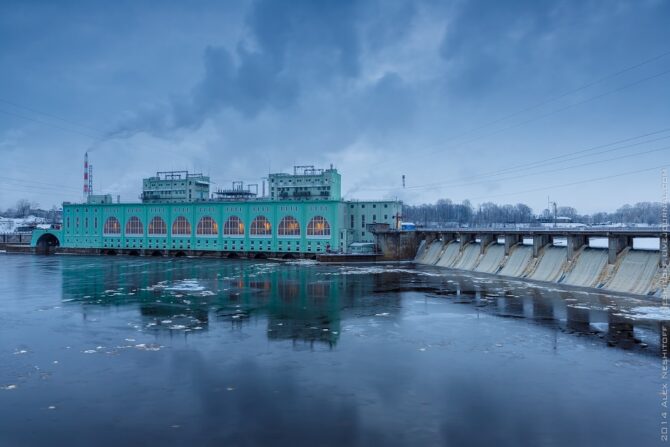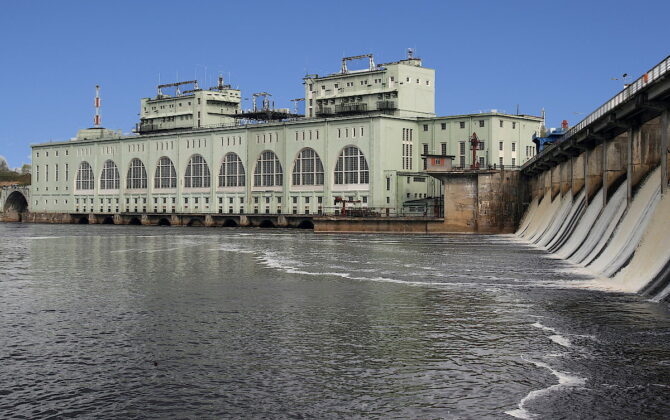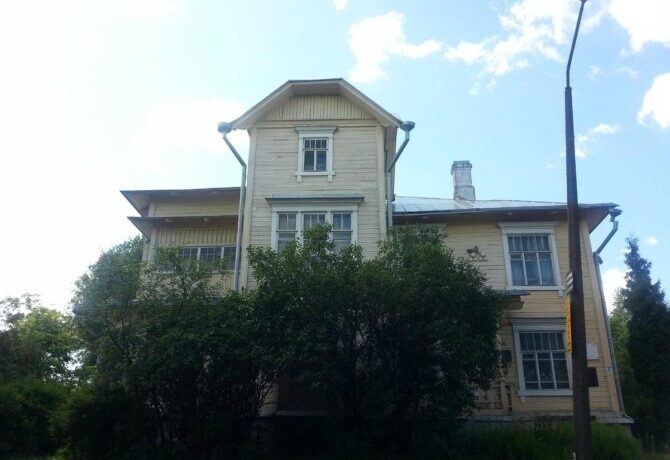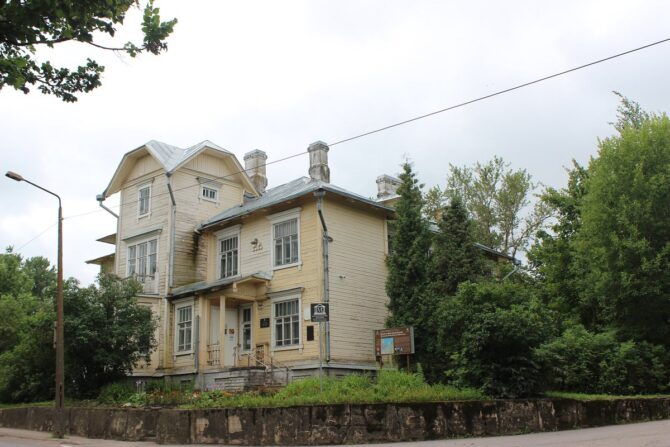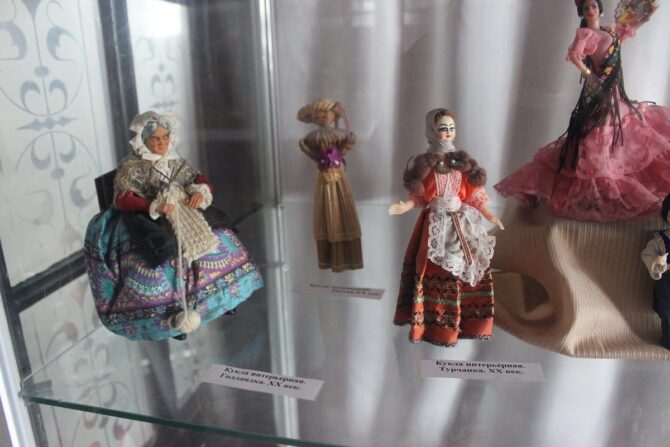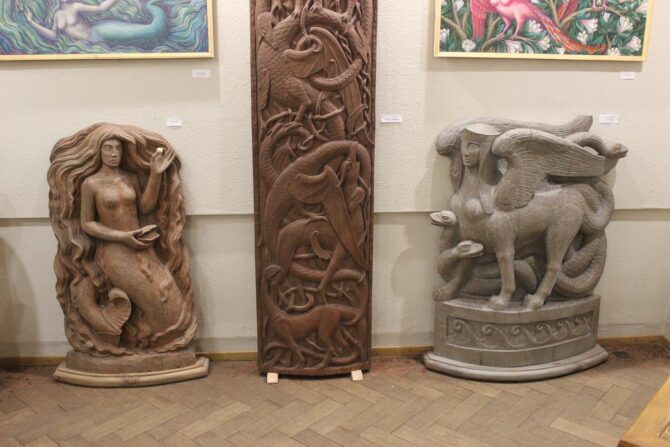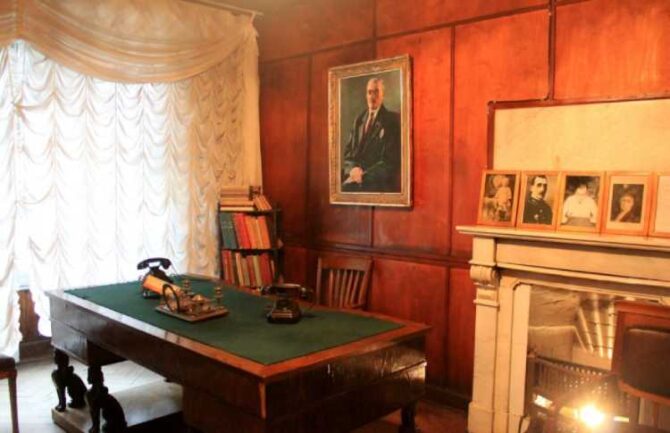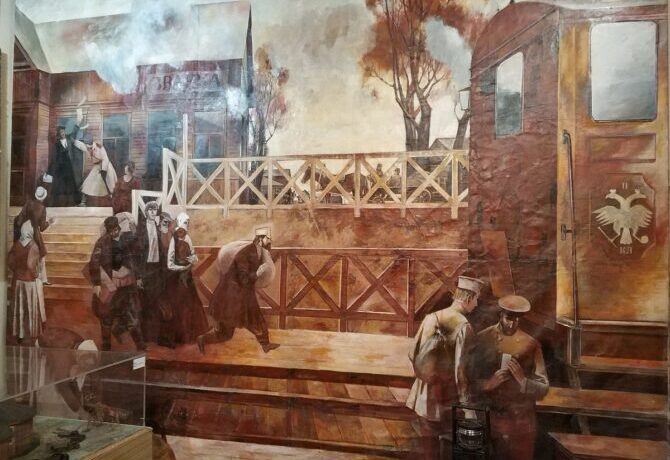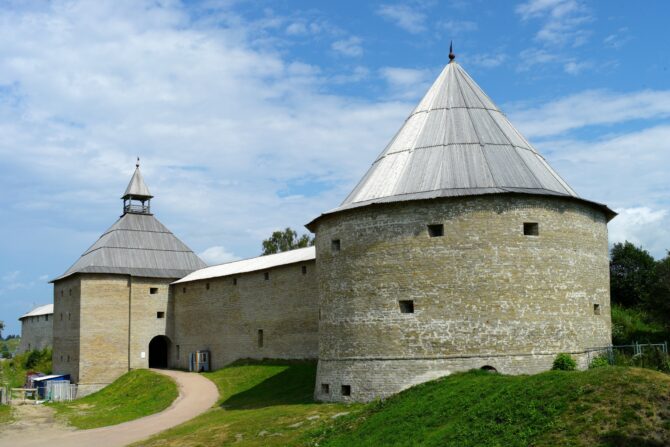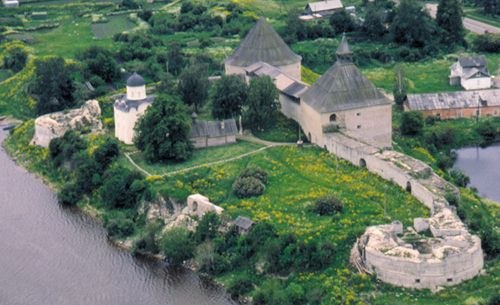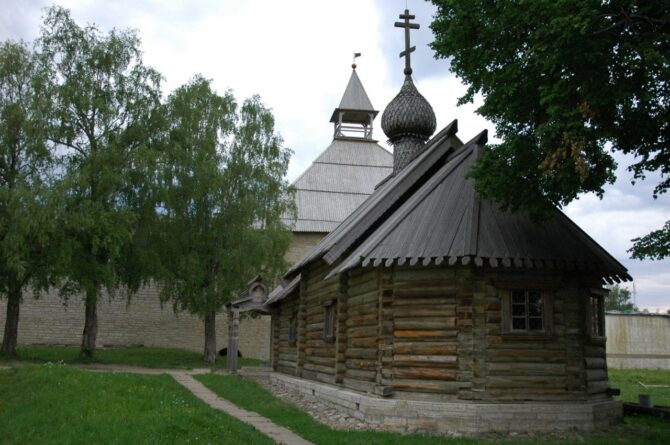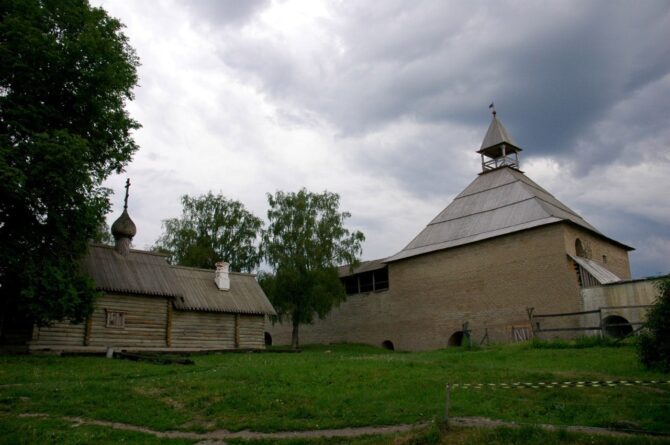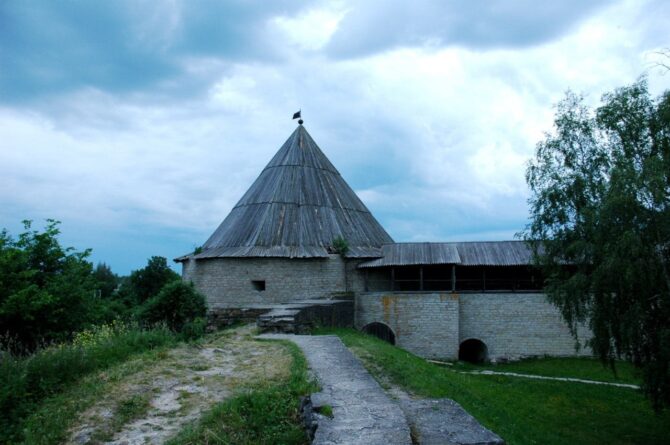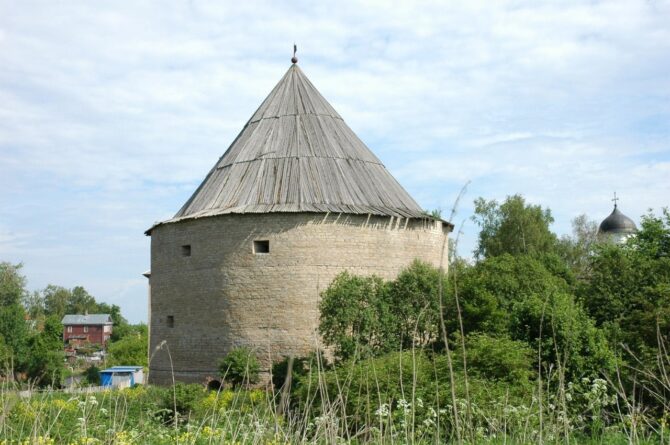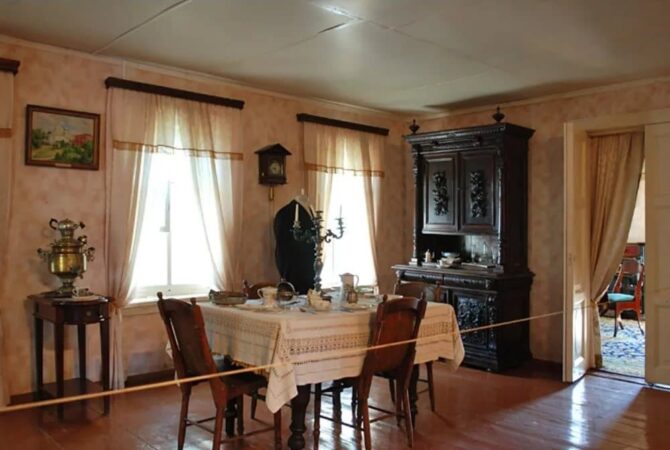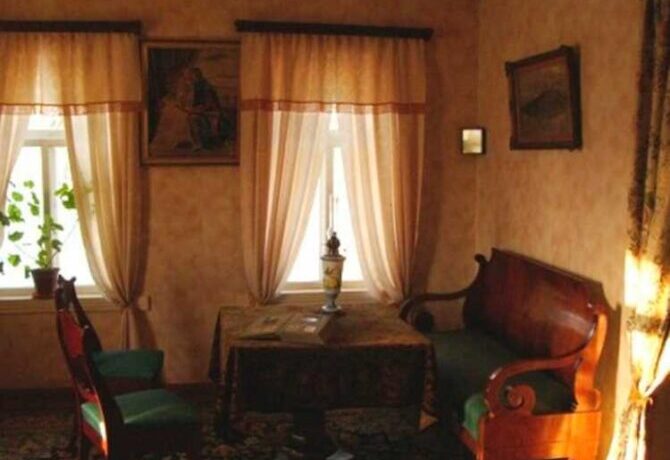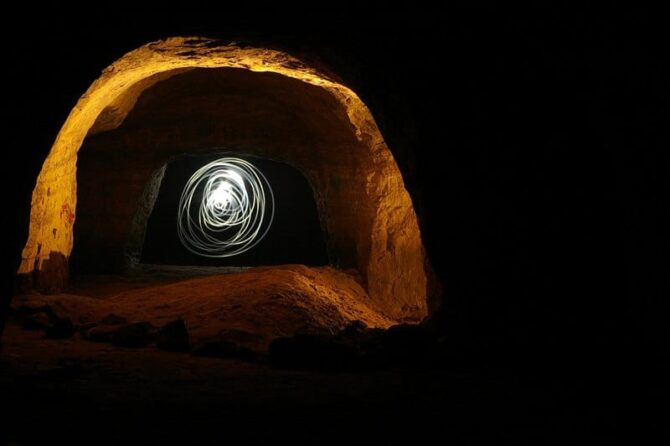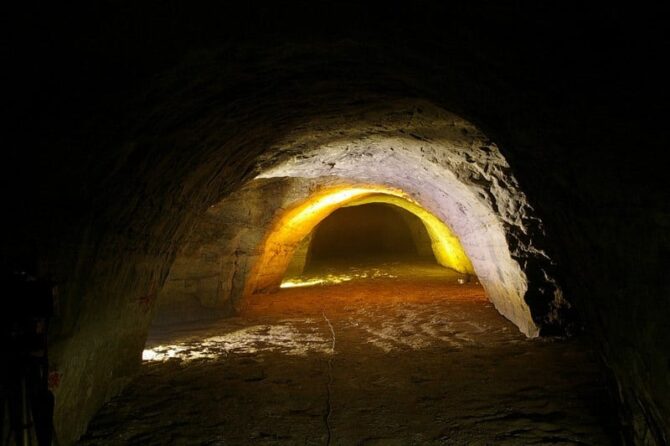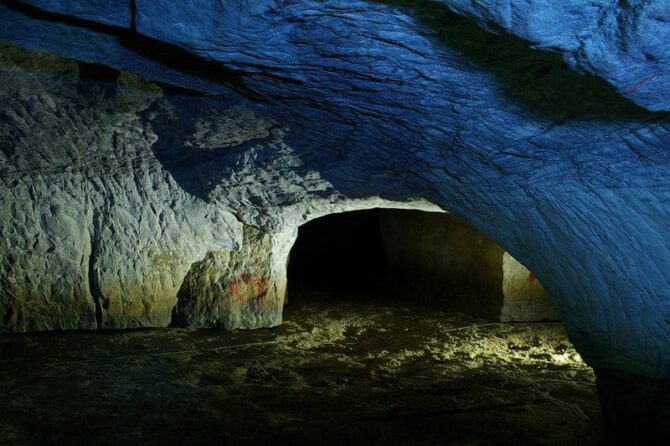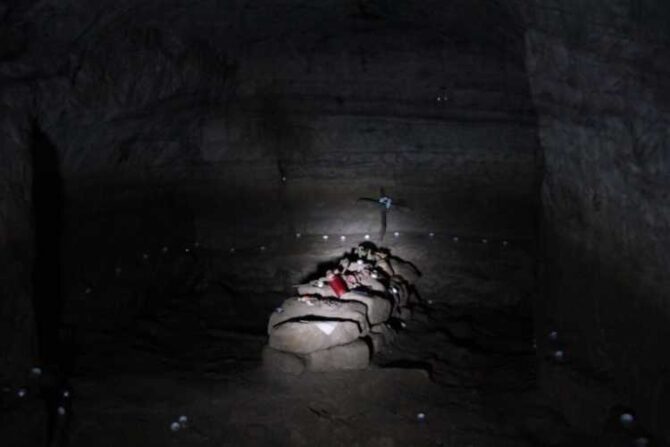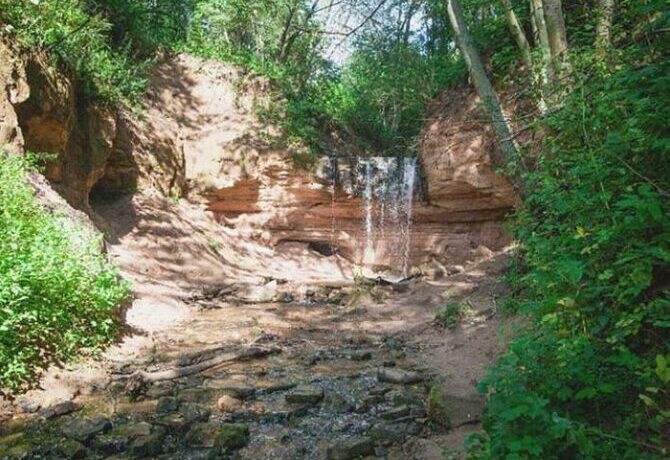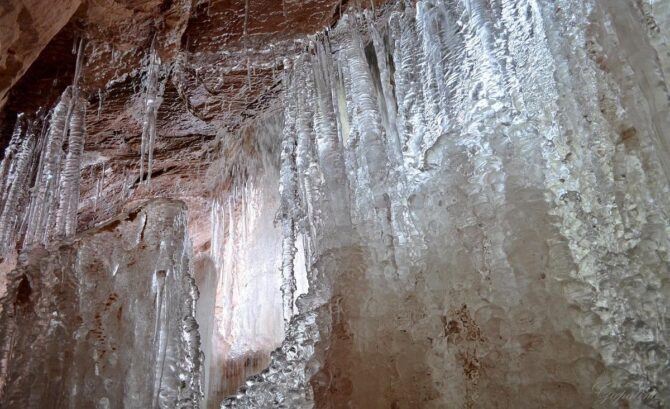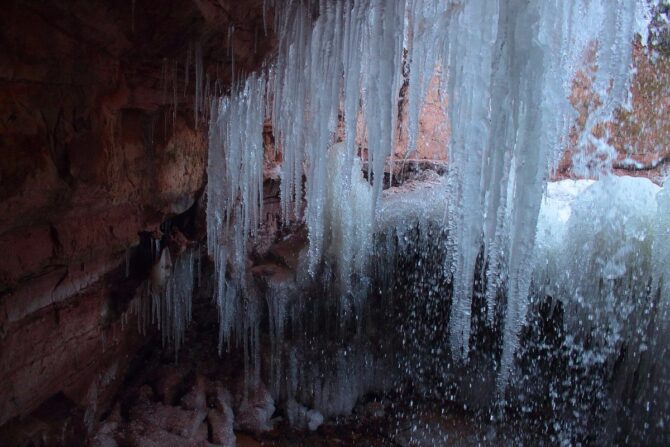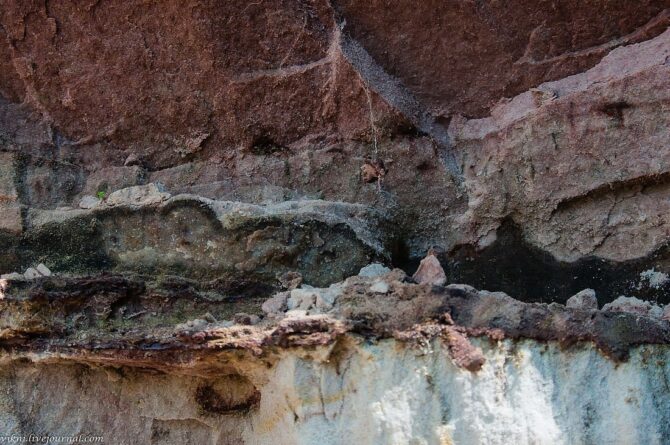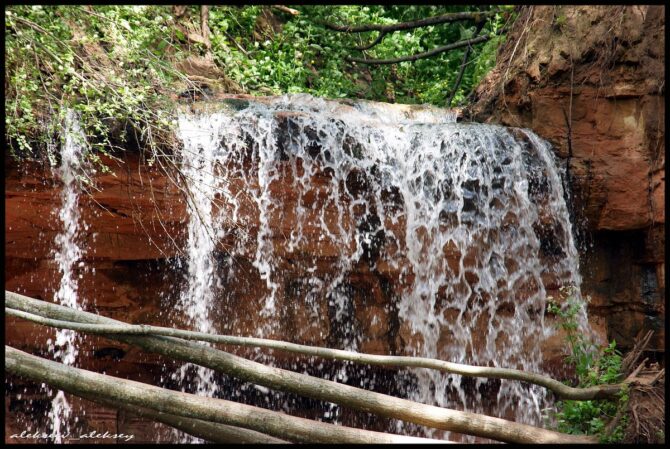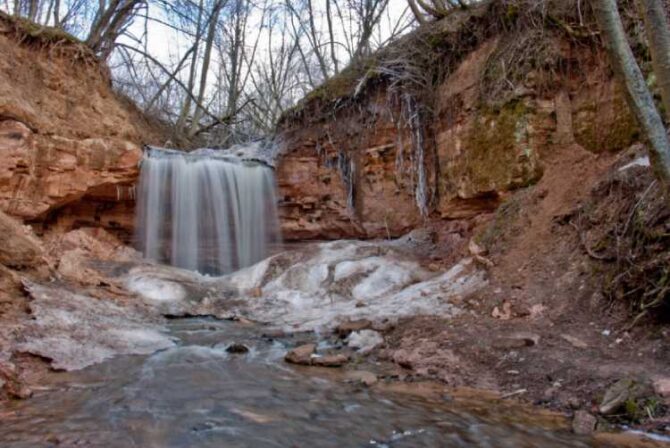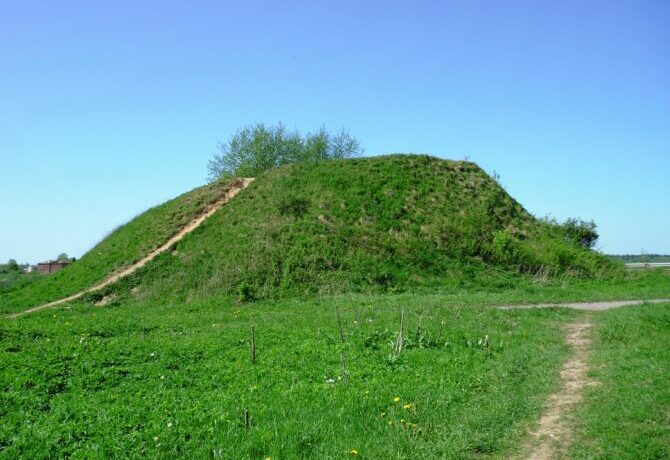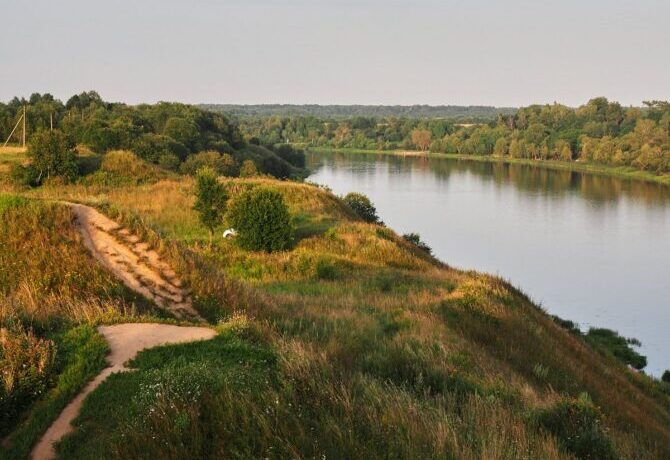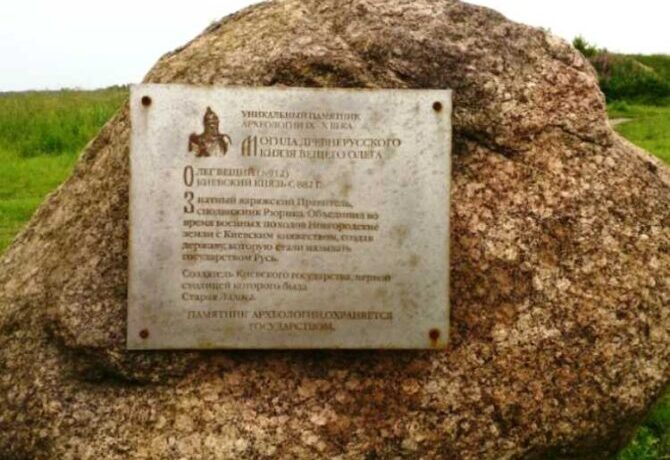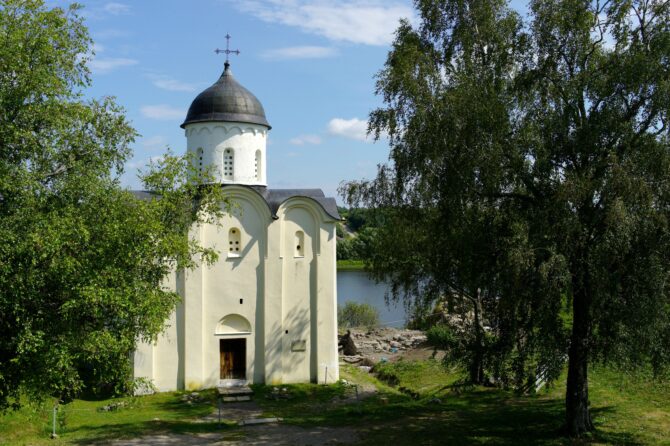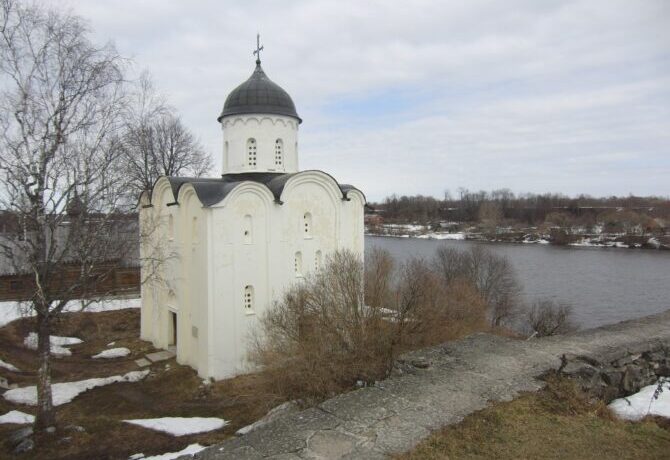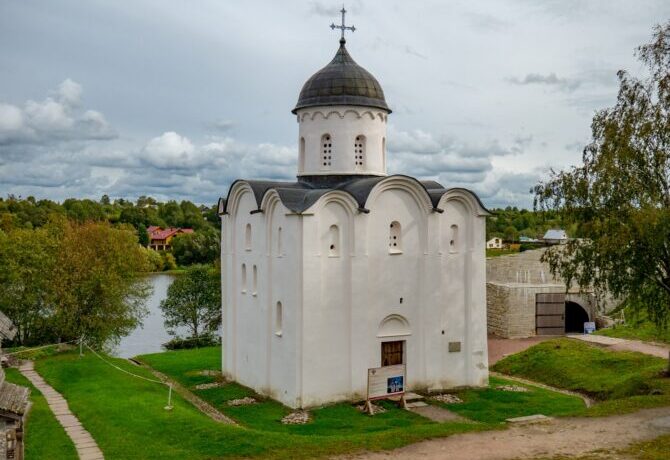Volkhov () is a city in Russia, the administrative center of Volkhovsky District of Leningrad Oblast. It is one of the most important railway junctions connecting the Russian north with the Urals, Central Russia and Central Asia. Also, the city of Volkhov is famous for one of the oldest operating hydroelectric power plants in Russia. This is a historical monument of science and technology, a masterpiece of constructivism, created by engineer Genrikh Osipovich Graftio.
Attractions Volkhov on map
Volkhov HPP
Since ancient times, the Volkhov River has served as an important link on a large waterway “from the Varangians to the Greeks.” But this path was hampered by a large number of rapids that threatened large ships, especially in the warm season, when the water level was low.
In 1725, an unsuccessful attempt was made to solve this problem. And after another 100 years, a project was developed to block the Volkhov rapids, but even then it was not implemented. And only in 1897 the first studies of the possibilities of using the energy of the city of Volkhov began. Then the project provided for the construction of a station in St. Petersburg with the transmission of electricity on high-voltage DC.
In 1912, the engineer G. O. Graftio designed a comprehensive use of the resources of the city of Volkhov for energy purposes and to improve the conditions of navigation. After this project, eight horizontal turbines with a volume of 7500 liters had to be installed in the construction of the power plant, whose capacity was designed for 60,000 liters.
Electricity was transmitted to St. Petersburg via 110 kV lines. The main advantage of the project is the ability to provide the industry of St. Petersburg with inexpensive electricity produced from renewable water resources of the river, capable of replacing part of the electricity generated using long-term fuel.
Also, the construction of a dam and a lock on the Volkhov rapids made it possible to create an excellent river route for the delivery of goods to St. Petersburg. Currently, the Volkhov HPP is a large energy center that reliably supplies electricity to consumers in the Leningrad Region.
Since the Volkhov HPP is a protected object, for an excursion outside the tourist group, prior agreement with the administration is required. The maximum number of visitors is 25, with children there must be at least 2 accompanying persons. You need to have a passport with you.
Address: Leningrad region, Volkhov city, Graftio street, 6
Museum of Local Lore or Museum of the History of the City of Volkhov
On the left bank of the city of Volkhov, opposite the hydroelectric power station, there is a house known to all residents of the city. It is impossible to miss it, it stands out among other buildings with a broken roof and many facades.
The house was built in 1923-1924. At the same time, the name of the person who designed it is not known for certain. The house was built for Genrikh Osipovich Graftio, the “father” of the Volkhov HPP. The place for construction was not chosen by chance, it was here that Graftio was most of the time, devoting all his time and energy to his idea. The view of the construction site of the HPP was clearly visible from the windows of the studio at any time of the day.
The house was an apartment consisting of 7 rooms, with all amenities, an open terrace and a basement. The house was heated by Dutch stoves covered with white tiles. They are still preserved in several rooms.
Genrikh Osipovich and his wife Antonina Adamovna, who was also his secretary, were given the second floor of the house. There was a bedroom and a large dining room. Today, on this floor of the museum there are exhibition halls and offices. At the same time, the decoration of the rooms on the second floor has been preserved since Graftio lived here.
Despite the fact that the house on the shore of the city of Volkhov is called as the house of Graftio, it would be more correct to call it a construction office. During the construction of the hydroelectric power station, conferences were held here, many politicians and well-known people throughout the country visited here.
The premises on the ground floor were intended for meetings and office activities, some rooms were used to receive visitors. At the end of the construction of the hydroelectric power station, the house owned by G. O. Graftio, the then civil committee of the party and the State Committee of the Komsomol, was transferred to hotels.
In 1969, the Museum of the History of the City of Volkhov was opened in the house of Genrikh Osipovich. One part is occupied by a small souvenir shop and at the same time a chest and a wooden staircase leading to the second floor. There is also a mini-exhibition dedicated to the Zvanka station, with which the city of Volkhov actually began.
Address: Leningrad region, Volkhov city, Oktyabrskaya street, 27
Staraya Ladoga fortress
In the village of Staraya Ladoga, at the confluence of Ladoga into the Volkhov, there is an ancient fortress of the same year – “Old Ladoga”. Its history dates back to the times of Rurik.
The first mention of the Old Ladoga fortress is found in the “Tale of Bygone Years”. Researchers call Old Ladoga the oldest capital of Russia. They also say that it is here that it is worth looking for the origins of the culture of our state.
After numerous raids and battles, the Staraya Ladoga fortress was rebuilt several times. In the XX century, the Old Ladoga fortress was almost completely destroyed, and its reconstruction began only in the middle of the century and continues to this day.
At first, like many others, the Old Ladoga fortress was wooden. But already at the end of the IX – beginning of the X century, Prince Oleg rebuilt it in stone.
In the days of the tsars, this settlement was one of the ten largest cities of the Russian Empire. Now it is a historical and architectural museum-reserve of federal significance. Old Ladoga is a small village and a historically significant place near St. Petersburg, full of interesting things. There are also good hotels.
Address: Leningrad region, Staraya Ladoga village, Volkhovsky prospekt, 19
Website: http://www.ladogamuseum.ru
Museum of Merchant Life
The Museum of Merchant Life or Kalyazin Merchant House is the sights of the city of Volkhov and Staraya Ladoga, two perfectly preserved, albeit old houses: stone and wooden.
The Museum of Merchant Life is a small museum created by local residents and descendants of famous citizens, but which preserved the traditions of merchant activity of the XIX century and the special atmosphere of merchants who once lived in this house. The museum of merchant life has an incredibly warm and hospitable atmosphere.
The house-museum of merchant life is a two-story old wooden building with several small rooms. The cozy splendor of the house-museum of merchant life is complemented by porcelain vases with flowers and thin curtains. In the museum building you feel like a real merchant who returned home after a long and persistent auction. Here nothing distracts from thinking and diving into the recent past, there are no noisy crowded tourists, noisy highways and other things that are distracting.
The Museum of Merchant Life is a modest architectural structure, typical of Russian architecture of the XIX century, a building made of red brick. The Museum of Merchant Life is open on Sundays from 9:00 to 17:00, a visit costs 30 rubles.
Address: Leningrad region, Staraya Ladoga village, Varyazhskaya street, 9
Tanechkina cave
In the 1890s, Tanechkin Cave turned into white quartz sandstone for glass making. Numerous settlers were trained by the chamber-pillar method. Thanks to this, the Tanechkina cave has acquired an incredibly beautiful and fascinating appearance: the vaults support the majestic columns, between which there are free passages.
After a significant depletion of Tanechkin’s fossil resources, the cave was abandoned. Not everyone decides to go deep into the cave. A winding labyrinth leads through crumbling halls and limestone-filled holes that are difficult to pass as many areas are flooded.
In Tanechkina cave there are several species of bats. In recent years, the number of colonies of these bats in the cave of Tanechkin has reached 400 individuals. Officially, it is believed that the cave of Tanechkin stretches along the Volkhov River for seven kilometers, but local residents tell legends according to which its length is much longer – about forty kilometers.
The unusualness of the place is added by the lake located on its territory. A huge part of the Tanya cave is flooded even in the hot summer. And during a flood, it is covered with water completely. But in a rare drought for these places, the underground lake dries up, leaving many puddles in its place.
Tanechkin Cave attracts the attention of many Russian speleologists, but it should be remembered: staying inside is associated with a high risk of collapse, which can be caused by sharp noises or sudden changes in temperature. Those wishing to visit this place should know that during heavy rains it is categorically impossible to enter there. You can wait out the bad weather near the Tanechkina cave. Here are the hotels of different comfort.
The area has recently been declared a nature reserve and is inaccessible to visitors during the winter season.
Address: Leningrad region, der. Staraya Ladoga
Gorchakovshchinsky waterfall
Gorchakovshchinsky waterfall is the highest waterfall in the Leningrad region, its height is 4 meters. It is located in a deep gorge up to 10 meters high. Gorchakovshchinsky waterfall of extraordinary size is little known, unlike the waterfalls of Sablino or the waterfalls of the Narva River.
Gorchakovshchyna waterfall is named after the village of Gorchakovshchina, in which it is located. The unnamed stream that formed the Gorchakovshchinsky waterfall flows through the red layered sandstones of the Devonian period and directs its waters into the Volkhov River, which flows into Lake Ladoga after 10 kilometers.
On the site of the height difference, a semicircular amphitheater was formed. That’s where the water falls. All this beauty is hidden behind thickets of willow and poplar bushes.
This place is especially suitable for visiting in the summer, when you can cool down with a cool stream of water, or in the spring to enjoy the width of the waterfall. Excursion to this place is offered by almost all hotels of the city of Volkhov.
Address: Leningrad region, Volkhov district, Issadskoye rural settlement
Tract “Sopki” (Grave of Prophetic Oleg)
The tract “Sopki” is one of the most important monuments in Staraya Ladoga, where, according to archaeological research, one of the founders of the Russian state, which united Novgorod and Kievan Rus, was buried. The identified remains and military accessories relating to the IX century were discovered by a group of archaeologists in 1820. From the tract “Sopki” offers a wonderful view of the Old Ladoga and the Volkhov River.
Nearby there is a plaque explaining what this place is. The tract “Sopki” is an unusual place and definitely deserves the attention of tourists. It is not known for certain whether it is Oleg, one of the founders of Russia, who is buried here. But if we assume that yes, then this is one of the most interesting places near the Northern capital. In the tract “Sopki” it is worth coming to touch the origins of the history of Russia, the origins of the country.
It is better to go here by car, this is almost the only convenient way to get there.
Address: Leningrad region, Volkhov district Staroladozhskoye rural settlement
St. George’s Church
The Church of St. George in Staraya Ladoga of the second half of the XII century is located in an ancient fortress in the lower reaches of the Volkhov River. This temple is known including unique fragments of frescoes of the second half of the XII century by Byzantine artists. St. George’s Church, like the Cathedral of the Old Ladoga Assumption Monastery, carries the recognizable features of the Novgorod school of the second half of the XII century. The exact date of construction of the temple is unknown.
St. George’s Church, known as the Ladoga Bride, glows brightly against the background of the gray walls of the fortress on the shore of the city of Volkhov. It was erected in memory of the victory in the battle with the Swedes on the Voronezhka River in 1164.
Worship in the temple was stopped only at the beginning of the last century, after the revolution it was completely closed, and in 1971 it was introduced into the number of objects of the Staroladoga Museum-Reserve. According to legend, the Novgorod prince Alexander Yaroslavich and his army prayed here in the middle of the XIII century before the battle with Jarl Birger.
Ladoga St. George’s Church is one of the few surviving religious buildings of the pre-Mongol era in the history of Russia. Its classic four-pillar quadrangle with three apses is crowned with a light drum with a dome in the shape of a helmet.
The main value of the church are the frescoes inside, made in the XII century by an artel of local icon painters under the guidance of a Byzantine master. Restorers are gradually removing the paintings from under the centuries-old mud. The most difficult thing is to protect them from moisture, so the door of the temple is opened as rarely as possible and only in the summer.
Opening hours: from May 1 to October 1 from 9:00 to 18:00, from Monday to 17:00. And only in hot and dry weather. The ticket price for adults is 200 rubles, for pensioners and students – 100 rubles.
Address: Leningrad region, Staraya Ladoga village
In addition to tourism, the city of Volkhov is also developing sports and outdoor activities. In summer, active recreation in the city of Volkhov is especially popular, since a river flows through the city on the shore, which is equipped with free beaches. At other times of the year, cultural recreation is more common here: walks in the surrounding area, museums, main attractions and city tours offered by hotels and travel agencies become popular.

